Ulcinj is the most ancient settlement in Montenegro. Its path of development, rise, and subsequent decline is woven into, and, at times, played a determinant role in the shared past of the Mediterranean. To have everything told about it would take a book. Archeological findings prove that this spot was loved by Illyrian tribes back in the Bronze Age. The town itself is believed to have been founded in the 5th century b.c. and was since frequently mentioned by ancient historians, i.e. Apollonius of Rhodes.
The convenient bay protected against sea storms by the Suka peninsula on one side and, on the other, by a tall cliff with the Old town resting cozily on top of it inside a fortress has always attracted fishermen, merchant seafarers, and pirates. The picturesque hills around it are silver with olive groves. The plain near the Great Beach (Velika Plaza) is a joy to the eye because of the mandarin orchards and the famous watermelon plantations.
This titbit of the seashore which offered control over the seas far and near, was at different times forced by crusaders, Montenegrins, Venetians, and Turks. All of them left a trace in the city’s ethnographic and architectural appearance.
The final passing of Ulcinj from Turkey to Montenegro happened in 1880 upon the conclusion of a peace treaty after the war of two empires, Russian and Austro-Hungarian, against a third one, the Ottoman Empire. Shortly thereafter, it became what it is now, a town on the country’s southern coast populated with the national minority. Local Albanians have gone bilingual, and after more than a hundred years in Europe they learned tolerance and became notably different from the population of their mother country.
Ulcinj is sometimes called the most western town on the east and the most eastern town in the west for a reason. The architectural salad bowl of ancient Venetian, Turkish, Montenegrin, and Yugoslavian houses creates an impression of an antique shop and is a joy to the eye of any one who is accustomed to living in industrial cities. Today’s inimitable provincial spirit of the place attracts those tired of the bustle of big cities.
In the summer, Liman, the place in the burbs of Ulcinj and on the rim of the olive forest, gathers the artistic elite from Moscow. Some renowned Russian artists and film directors live at this picturesque place around the year.
The steep and narrow cobbled streets, orange tile roofs, cafés and restaurants one on top of another, bakeries and jewelry shops, minarets, a market with stray chickens, friendly passersby smiling at you, all that resembles the long-forgotten charm of a rich village by the sea.
Doctors say that the air in Ulcinj is good for asthma patients and those suffering from other lung diseases, and the local atmosphere is generally acknowledged as healing for all types of anxiety disorders.
Historically, as well as in all coastal Montenegro, they do not honk on the road to speed up the cars in front even if they see that a driver has stopped to have a couple of words with a friend driving in the opposite direction and even if he has lost count of time. Everyone here knows that in some two hundred meters he may find himself in exactly the same situation. They only honk once to greet an acquaintance.
Ulcinj market is said to be the best in the country. Beautiful Albanian market women pack their tomato and chard, put on fancy national clothes to show off before their fellow girls. On market days (Tuesdays and Fridays), lovers of everything organic and natural come here from the neighboring towns. It is the only place in the neighborhood to buy locally grown vegetables and fruit and fresh milk straight from the cow. Proximity of Albania has its effect on the prices too, which are quite moderate.
In the morning, out of their homes to the bells of the orthodox and catholic churches, local men solemnly take their favorite seats in local kafanas, read their morning papers, and sip on their coffees or even rakija while exchanging remarks with their fellows spending time across the road at the other kafana. Several times a day, the air fills with muezzins’ calling to prayer. Yet, there are no people praying on carpets in the street. At weekends, the town fills with loud music and flagged wedding corteges of expensive cars usually preceded by a truck full of wedding gifts, mainly carpets, bedlinen, kitchen and other electronics, all the young family may need to start living on its own.
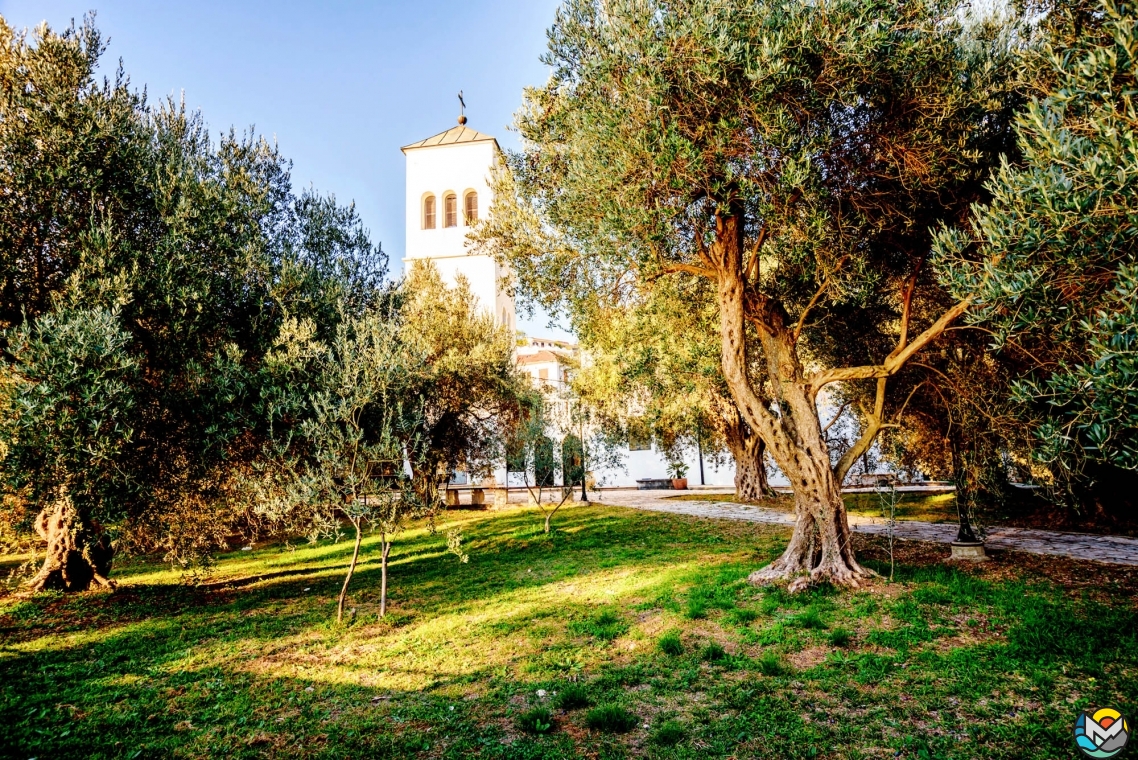
Bare statistics say that the municipality has 7.5% Serbians, 12% Montenegrins, the rest are Albanians, with many Catholics among them. Overall population in the town is ca. 10 thousand, with the municipality counting 20 thousand residents overall.
Everyone smiles and ready to offer help, although the one thing they most frequently come up offering Russian is buying some land from them.
By the way, Albanians from Ulcinj have an impressive diaspora in New York, and there is an American uncle in almost every family.
The place still lives on an ancient tradition of letting the sons marry only after a plantation of olive trees is planted. By the way, the government is still ready to pay for nursery trees if they are more than 120.
The town is proud of its music school with a bid performance hall which sometimes hosts touring performances, including concerts of classical music.
The main attraction is the old town, of course. It is an architectural open-air museum located inside the walls of a fortress representing polygonal masonry. Right after the entrance, there is a square which used to be a fish market and now hosts performances of folk ensembles and poetry readings.
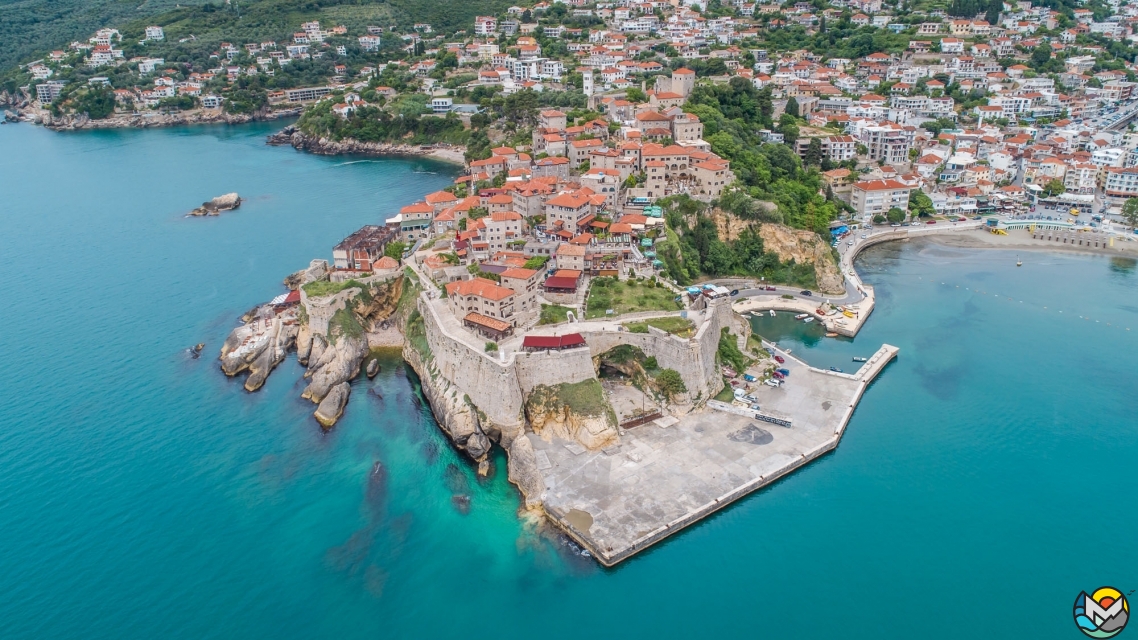
The next thing you will see is Tears of Dulcinea, a freshwater source. Doesn’t this name ring the bell? Especially if you remember that back in the 16th century the town bore the name of Dulcigno.
There is no proof that Cervantes ever stayed in Ulcinj. However the recent version goes that the owner of Spanish slaves from a ship seized by pirates near the shores of Algeria came to Ulcinj specifically to sell them for a higher price, for Ulcinj was known to be the capital of slave trade in the Mediterranean. Among those slaves were Cervantes and his elder brother. Cervantes himself who was found to be carrying a commendatory letter to the Spanish king was announced an important person, and such an insanely high redemption price was asked that he was released because no one could afford to buy him.
Balšić Tower hovers over the place that used to be the slave market and now hosts art exhibitions. In the late XVII c., Sabbatai Zevi, the self-proclaimed Messiah, was imprisoned in this tower by the Grand Vizier.
The Old Town is still inhabited. It is not an architectural museum only. There is linen drying in the yards. There are hotels and restaurants. Each terrace overlooks the sea its very special way. A mini-tractor with a trailer slowly climbs up and down the never-ending stairs to deliver firewood and food supplies. On the lower platform, on the right, there is an old lighthouse, and on the left an allegedly healing spring blocks off the entrance to the Rotary club of local masons. Nothing is known about what they do or how they live, only that every New Year they distribute toys and warm clothes to children from low-income families.
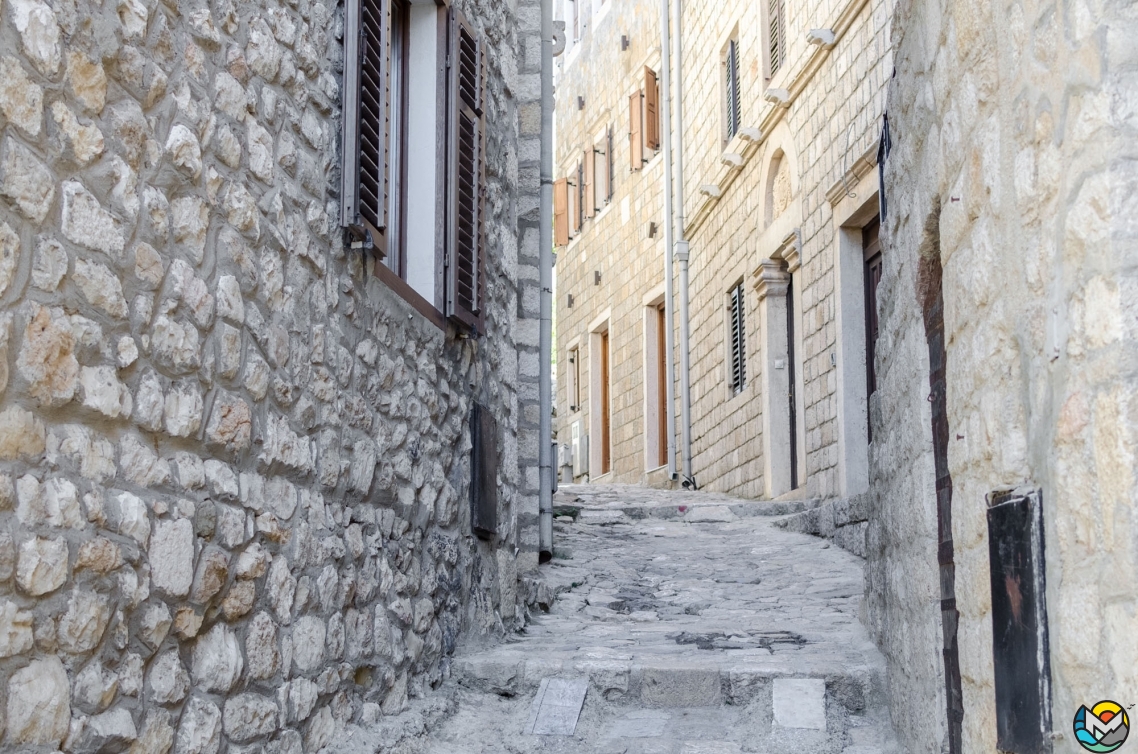
What is fun about the place is that most of those who bathe only come into the water waste- or chest-deep. That is because they can’t swim!
Among the motley crew of locals and tourists, your eye will catch women clad in black silk up to her brows and wearing men boots. These are Kosovo refugees. Local girls and women prefer provocative brightly-colored leggings and close-fitting waist-long blouses.
If you stroll on along the seafront promenade, the road will take you slightly up and above to open onto something completely different. The inviting restaurants, each with its own deliciously smelling food and a comfy patch of shingle beach, are lined up in the spicy shadow of the pine grove.
-
There is the famous Ladies only beach in a secluded bay at a Sulphur spring that is said to be good for female health. Men are not allowed here, and even Muslims let their wives spend time at the beach.
As the road bends, under the pines and over a drip, there is a wonderful restaurant called Aragosta. The owner who is also the chef knows everything about sophistication in food. For example, there is no other place where you can enjoy cevice, a dish made of fresh fish under a marinade of olive oil and balsamic vinegar. The fish literally melts in your mouth and makes you feel full for the next couple of days.
All this is a just a step away from the town center.
Climate
217 sunny days a year make Ulcinj a great place for beach holidays. The peak of heat is usually in July. The sea gets as warm as 25-27 °C and remains warm until the winter, so there are many tourists daring take a swim in December. Why not, if it only takes a towel to have some protection from the wind after the swim.
The coldest, wettest, windiest and stormiest weather is usually February: gasps of wind bring about horizontal floods of water, the sea fierce and loud in its rage. But once the sun is out, the wind subsides; everything dries quickly and one may sunbathe for an hour or two. Без фанатизма, конечно. March and April are rainy.
This place has a microclimate of its own. One can watch from aside, say, from Ada Bojana, rains and thunderstorms circle above the nearest mountain chain and Ulcinj would be bathing in sun. If you travel along Jadransky put (Mediterranean Highway), the town of Bar may be drowning in heavy rain while some 30 km away Ulcinj wouldn’t get a single raindrop.
Food
First of all, there is delicious fast food at every corner. Bureks that make you salivate, thinnest pizzas and bog-standard hamburgers are ultimately delicious. Somun, the local kind of scone, deserves special mentioning. You tear it up while it is still hot from the bakery, dip it in olive oil, take a bite of it and young cheese and wash it all down with wine… What else is there to be wishing for?
Almost all restaurants cook to traditional recipes. Differences between one restaurant and others are minimal. And all are good.
First of all, order yourself some corba. It could be riblja corba, a thick soup of ground fish which eaters are to season with a couple of drops of rakija and a bite of pickled hot pepper. Or a thick soup with finely chopped veal or beef.
Following the time-tried tradition, local cooks always do their best to give the meat or fish they cook a little too much frying and drying. Make sure to tell the waiter how well-done you want your food when making your order.
Some places offer very good black “risotto” with frutti di mare, from little octopi and calamari to shrimps and mussels. The risotto is black because of cuttlefish ink.
Beaches
Ulcinj Riviera is nominally divided into four parts. Valdanos is pebbly. “Mala plaza”, the small city beach, is sandy, while further into the pine groves there is rock with concrete padding thrown over. Velika plaza (the Long beach) and Ada Bojana are both sandy.
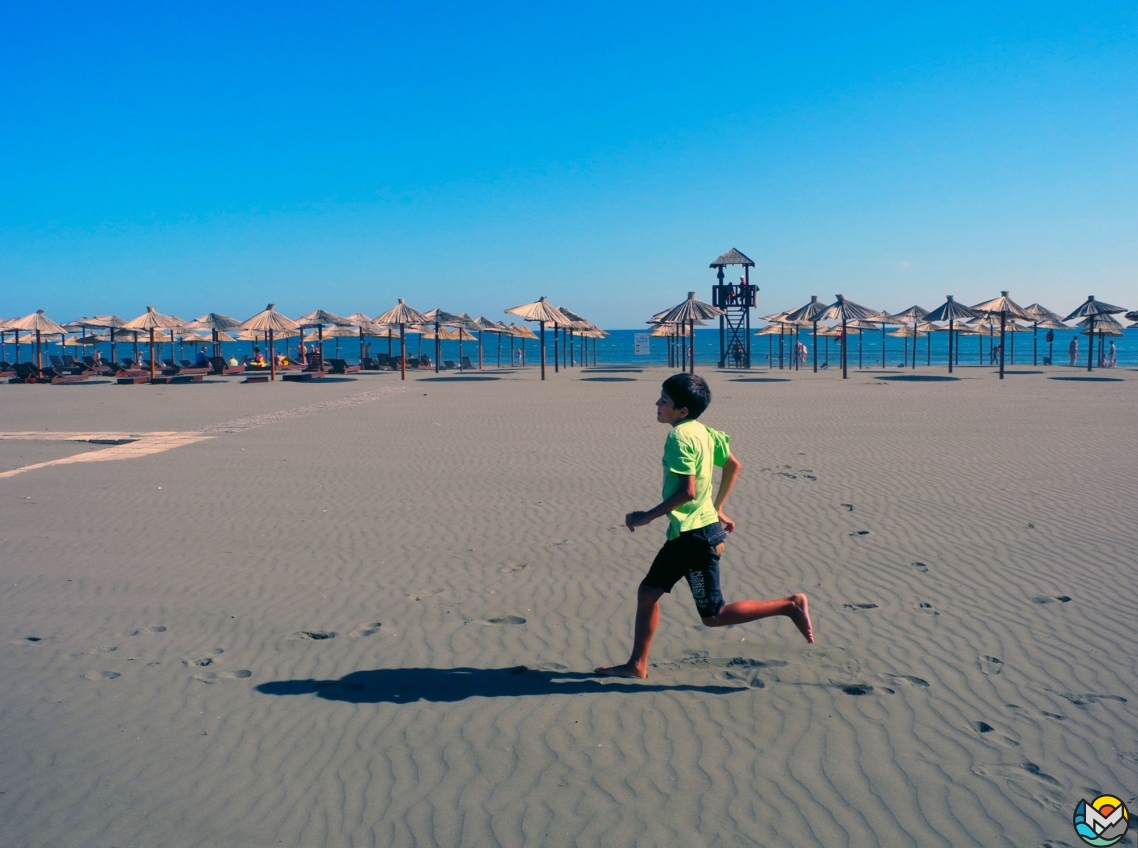
Velika plaza
Or the Long Beach, is the longest sandy beach in Europe nearing 17 km of black healing sand washed from the waters of the Bojana. There is talk that if one digs oneself deep down this sand, it will heal arthrosis and bone diseases. If you have a magnet in your phone case, you may notice particles of this sand sticking on it. The beach is 60 meters wide. The smell of the fresh sea breeze mixes with the spiciness of the nearby pines. Of course, everything is covered in sunbeds and sunshades. Water entry is very flat, and tourists with children appreciate it.
The nature and climate at the Long Beach are ideal for “wind catchers”, lovers of the water sports that need sustainable wind. Open sea, moderate waves, no hidden underwater reefs or rocks. During the summer season, usually shortly after noon, there comes Maestral, a strong western air current. Closer to the Bojana River estuary there are a lot of kite surfing schools, and that is where the beach turns into heaven for beginner windsurfers.
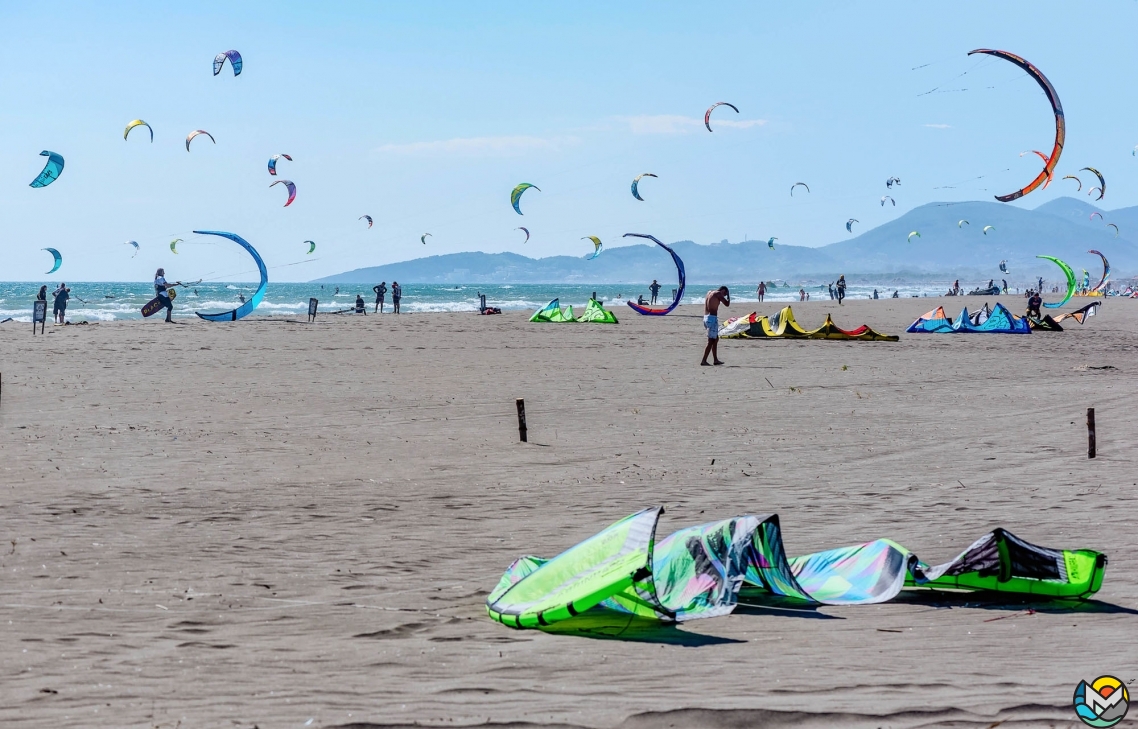
Solana
Sometime around the 1930s, the owner of the nearby swamps in the Bojana River valley, found himself completely fed up with mosquitos. He decided to dig a canal to drain the swamp into the sea. But it did not work as planned, and the water from the sea flood the swamps and turned them into a shallow but spacy lake. Locals began to evaporate salt to supply it to every corner of the Balkans. Today, the salt production is abandoned, although the tasty local salt is still sold in some placed in 5-kilogram bags.
The salt lake has become a home to flamingos. They nest here and walk the shallow waters around the year, and the district has been assigned the status of a national reserve. In January 2017, as a result of incredible frosts which hadn’t been seen in a hundred years, for a week the lake was covered in ice near the shore. Some birds died. Everybody hopes the flamingo headcount will restore itself quickly.
The flamingos are not easy to get to. You will be asked to leave your car at the gate, and getting there will take a walk of several kilometers. The only way to see the pink birds is through high magnification binoculars.
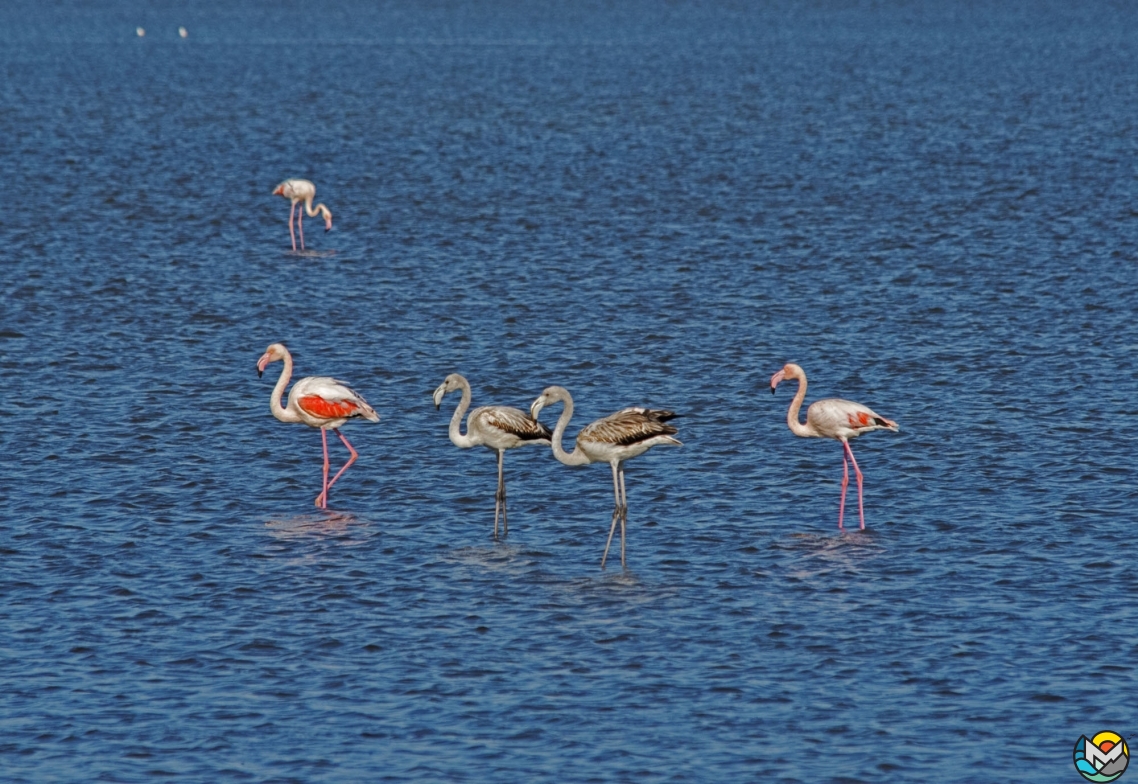
Valdanos
Valdanos is a spacious bay of extraordinary beauty to the north of the center of Ulcinj. On the tip of the left shore sits lighthouse Mendra which still functions in a building erected in the late XIXc. A lighthouse in this area has always been a necessity since beginning of navigation in the Adriatic.
The rock on the right is cut vertically as if by a giant axe or the Martians’ laser. Right under it on the pebbly beach in the shadow of the cypresses the summer branch of the famous Aragosta offers snacks and coffee.
This is the exact spot where Sultan Mechmet’s fleet gave a smackdown to the pirate fleet of Ulcinj, all locals were driven out of the fortress and made plant olives around the town. That was obviously done to train them to do something other than piracy. This was the end of the pirates’ freedom and the excessive wealth of the town. Yet, olives have always grown here. There are a lot of thousand-year old trees and they still fruit, all it takes is timely pruning. Some trees have a certificate to testify their old age. By the number of trees and vastness, the local plantation is unique in Europe.
Divers claim that on the seafloor outside the bay there are remnants of ancient sunken ships.
At the marketplace, locals sell all types of “domace”, or homemade, olive oil. Local olive oil makers are frequently named winners of different international competitions.
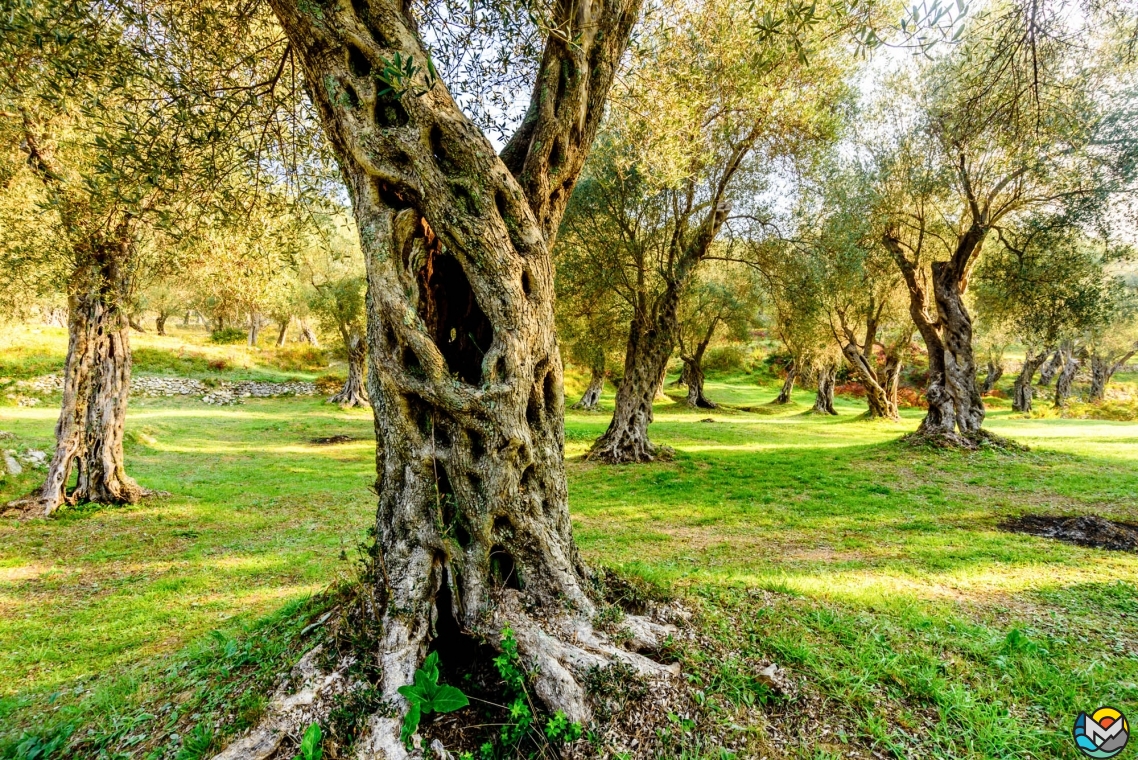
Skadar
Ulcinj municipality owns an impressive onshore and offshore portion of freshwater Lake Skadar. It has been announced the largest lake in Europe in terms of the area it occupies (counting out Russian' Lake Ladoga, of course, which is nearly five times as big). There are no boat tours offering visitors to peek into local wildlife, all boats leave from Virpazaar, a popular tourist spot on the way from the seashore to Podgorica.
Sometimes, when the summer heat is at its highest, a cold sea current comes, and that is a sign to flee the seafront towards the lake for a swim in the warm freshwater, and there is a restaurant near.
The fierce blue-water Moraca River and two minor rivers disgorge themselves into Lake Skadar, and the mighty Bojana takes off from the lake. The legend goes that several centuries ago a galleon loaded with wine sank in the estuary of the Bojana river, and with time, the river carrying particles of sand covered the ship in a triangular-shaped sand island Ada (the Turkish for “island”). The sea-facing side is approximately 3 km long. Today, it is the home to Europe’s oldest naturist resorts. Stately beauties from the local lifesavers’ team ask everyone in their swimwear leave the beach. There is a dedicated corner for “textiles” (an international terms used for those who prefer spend their time at the beach in swimwear). Whatever type of a beach person you are, you will be heartily welcomed at the famous river restaurants resting on piles “Ćićkova Čarda” and “Konoba Kod Ranka”. Just a meter under your feet runs emerald-green water, and you may watch ducks and fish through the slits in the floor boards while enjoying your meal. If you want to get to the island by car, you will be charged EUR5 for the car and EUR1 for each passenger.
There are a lot of restaurants on piles across the Bojana. The parking is free. This place attracts families from all over to feast on fresh fish enjoying the river view from the terrace.
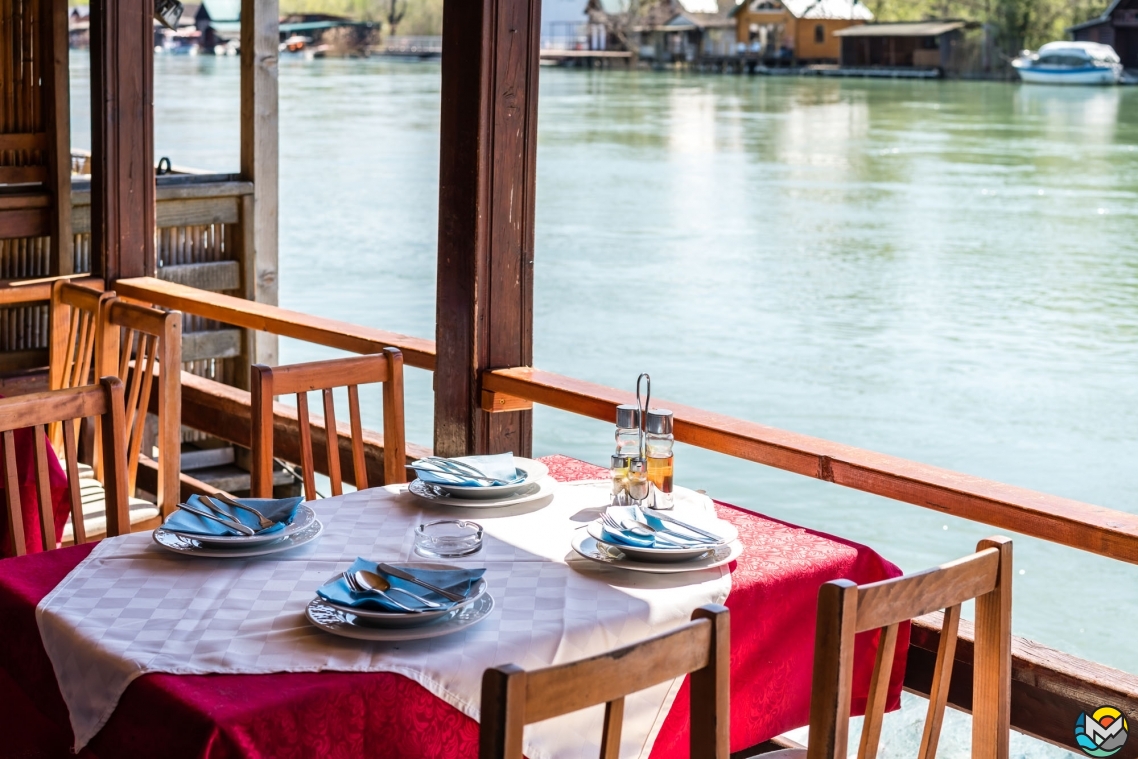
Kalimeras
The water surface at Port Milena on the canal which connects the sea and Solana is spotted with shabby fishermen’s huts on piles. Next to the huts square fishing nets dry propped on the long poles. The place called Kalimeras bears a resemblance to Vietnam. At the beginning of winter when small fish have grown some fat the fishing nets with bread for bait go in the water to come out with fresh catch. The catch of little sardines is fried in oil or grilled and sold right there. This dish is considered the local delicatessen.
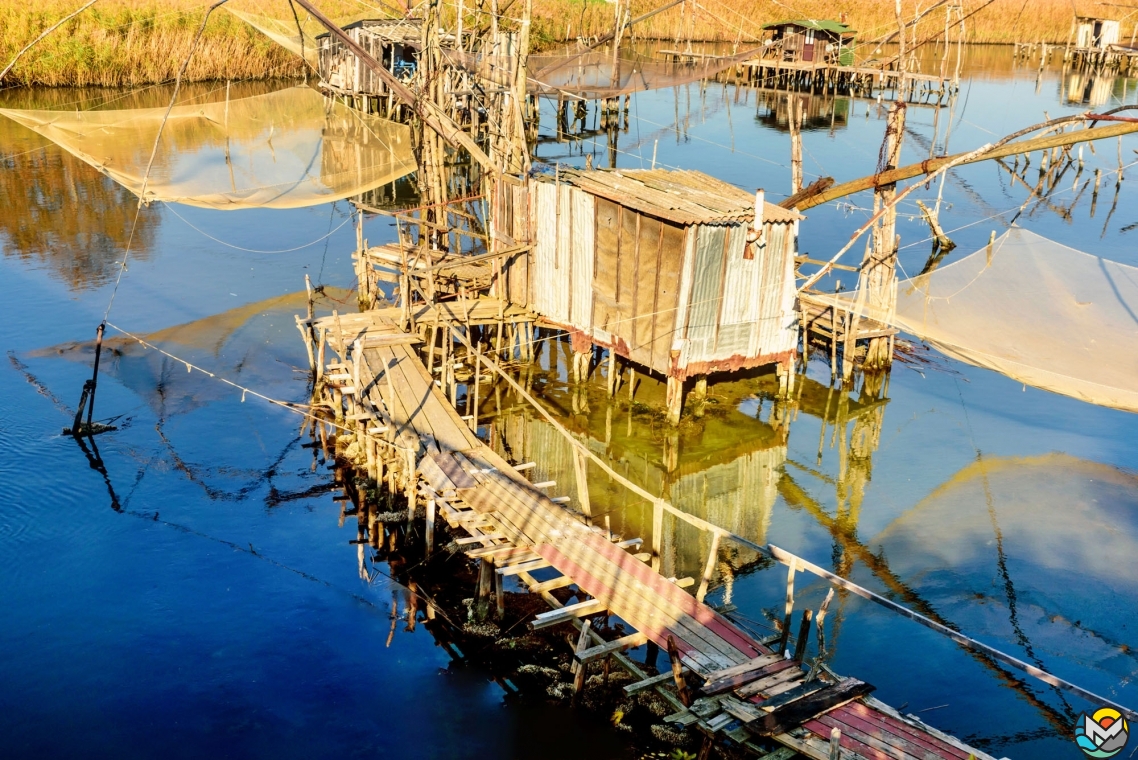
Sabbatai Zevi
Sabbatai Zevi, a rabbi who claimed to be the long-awaited Jewish Messiah, is a very contradictive figure in local history. He is buried in Ulcinj. He told his followers to be careless about the sacred books, entertain while worshipping, dance, have wine, and participate in orgies. He could easily become ecstatic and spellbound others. The Ottoman Empire was religiously tolerant. But when Sabbatai came to Constantinople and set the numerous local Jewish community in disorder, he was summoned by the vizier who received him while seated at a table with a yataghan on it. He said that if Sabbatai did not immediately abjure his religion and does not convert to Islam, his head would be chopped off by that very yataghan. This is how Shabbatai became Muslim in as little as one minute.
The vizier did not believe Sabbatai and order him banishment to the most remote part of the Empire, Dulcigno (now Ulcinj). He was kept in custody for several years, but as soon as he was out, he lapsed into his old ways; luckily there was a Jewish community in town. But he soon died.
If anyone tells you or if you ever read that any foreigner got to see Zevi’s tomb, do not believe it. His tomb, after several re-allotments of land, happens to be in the backyard of a private estate. The owners of the place where he rests are faithful Muslims and wouldn’t stand any pilgrimage onto their private land.
Wine
Twenty kilometers away from the town, in Briska Gora which lies slightly aside from the Montenegro-Albania motorway, there is Milovic winery. You can get there by taxi or order a transfer directly from the winery.
This place offers extensive wine tasting and plentiful snacks. Their Status Barrique has won numerous medals at European wine competitions, and its quality truly holds its own against Italian and French reds. The winery’s catch is that it producers only red wine from Vranac, the indigenous grape variety, and uses the crops from own vineyards only.
The owner of the place claims that if you cannot make a move and leave the table, you may stay overnight for free. This place is a beloved pastime venue for locals. It is frequented by Serbian-speaking ethnic performers. There is a swimming pool and a tennis court.
The winery welcomes visitors around the year.
Whether a tourist, a traveler or a seeker of a nice place to spend a vacation, the charm of Ulcinj and its neighborhood will not allow anyone stay indifferent!


